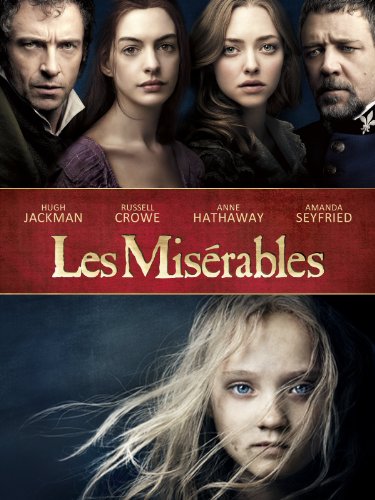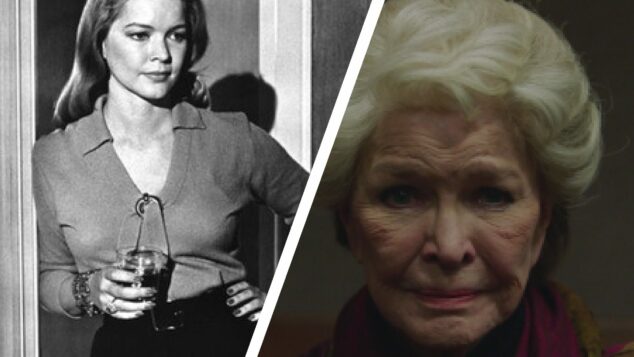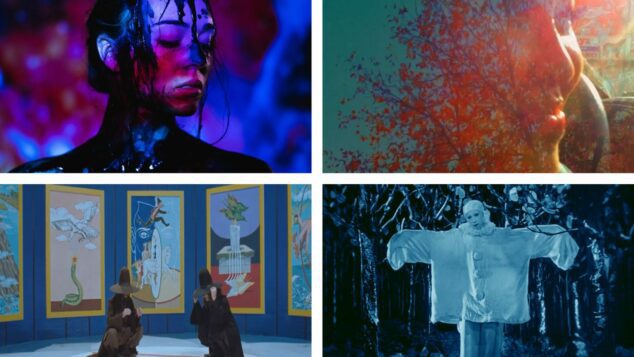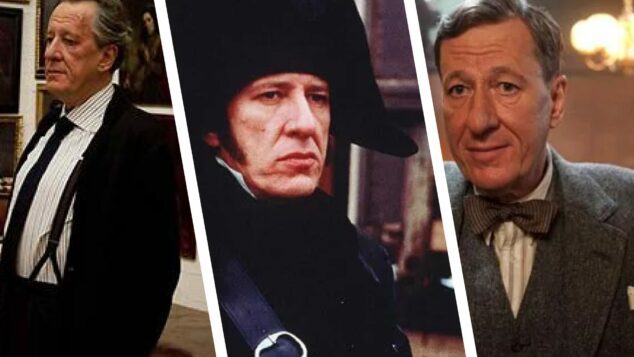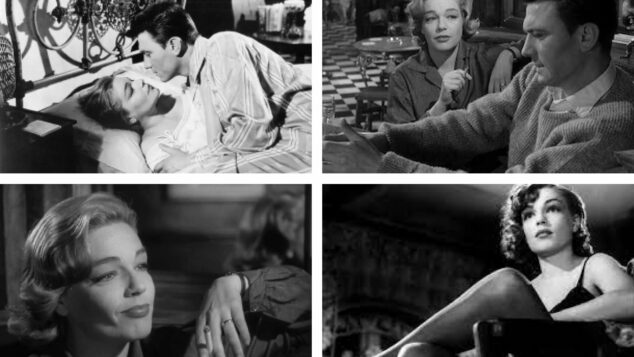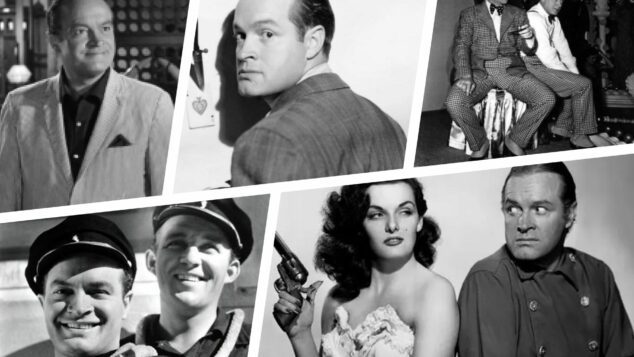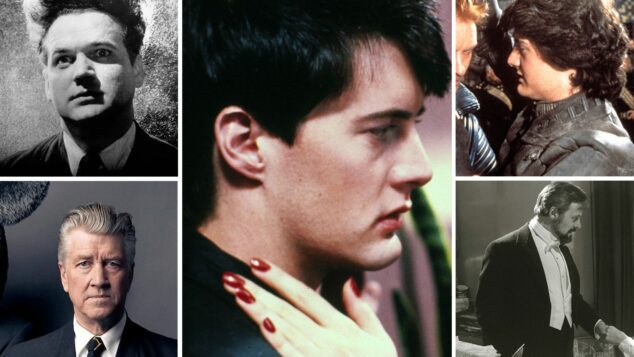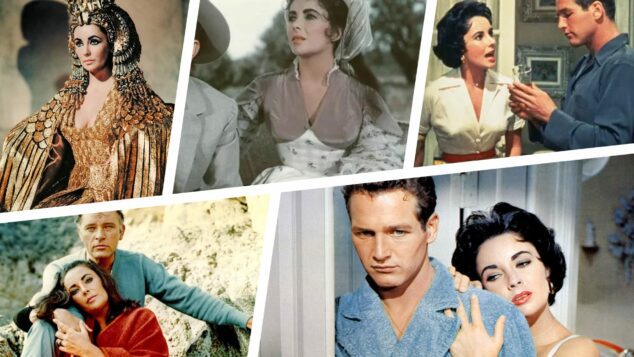We’ve all been there, glued to our screens, waiting with bated breath for the winners to be announced.
But while most eyes are on Best Picture or Best Actor, there’s an unsung hero category that’s equally crucial to a movie’s success: Best Sound Mixing.
Dive with us into the symphony of soundscapes and the maestros behind them as we take you on an auditory journey through the Best Sound Mixing Oscar-winning movies.
This guide is your ticket to understanding and appreciating the magic that is often felt but seldom acknowledged.
Prepare your ears for a cinematic treat!
BEST SOUND MIXING OSCAR
What Is The Sound Mixing Oscar?
The Sound Mixing Oscar is an award presented annually by the Academy of Motion Picture Arts and Sciences (AMPAS).
It recognizes excellence in the field of film sound mixing, which involves balancing and blending various audio elements – like dialogue, sound effects, and music – to enhance the overall viewing experience of a movie.
A well-mixed film can transport audiences, making them feel like they’re right there in the scene. The award is given to the team of sound mixers or re-recording mixers who worked on a particular film.
In essence, the Sound Mixing Oscar honors the unsung heroes who ensure that what you hear complements what you see on screen, creating a harmonious cinematic experience.
Academy Award For Best Sound Mixing
1. Dreamgirls (2006)
In the film “Dreamgirls” (2006), Jennifer Hudson delivers a stunning and unforgettable performance as Effie White, a talented singer who faces the challenges of love, fame, and personal growth.
Hudson’s portrayal earned her critical acclaim and an Academy Award for Best Supporting Actress.
Hudson’s performance in “Dreamgirls” is marked by her powerhouse vocals and raw emotional depth.
She captures the essence of Effie’s character with remarkable authenticity, portraying her as a strong-willed and fiercely talented woman who struggles with her own insecurities and the dynamics within the group.
Hudson’s incredible voice brings the music to life, and she delivers each song with a breathtaking combination of passion, soul, and vulnerability.
One of the standout moments in Hudson’s performance is her rendition of the iconic song “And I Am Telling You I’m Not Going.”
Her emotional delivery and powerhouse vocals in this scene are nothing short of extraordinary, leaving a lasting impact on the audience. Hudson’s ability to convey Effie’s pain, resilience, and determination in this pivotal moment is truly captivating.
Beyond her vocal prowess, Hudson’s acting skills are also on display throughout the film. She brings a sense of vulnerability and depth to Effie, allowing the audience to empathize with her struggles and journey.
Hudson effectively portrays Effie’s growth and transformation, capturing her emotional highs and lows with authenticity and conviction.
Overall, Jennifer Hudson’s performance in “Dreamgirls” is a tour de force. Her commanding stage presence, powerhouse vocals, and ability to convey a range of emotions make her portrayal of Effie White a standout in the film.
Hudson’s performance is an unforgettable contribution to the musical genre and solidifies her as a force to be reckoned with in both singing and acting.
2. Gladiator (2000)
“Gladiator” is a 2000 historical epic film directed by Ridley Scott. Set in ancient Rome, the film tells the story of Maximus Decimus Meridius, a loyal general who is betrayed by the corrupt Commodus, the Emperor’s son, and seeks revenge.
Maximus, played by Russell Crowe, is a respected general who becomes a gladiator after being enslaved. He rises through the ranks of the gladiatorial arena, using his skills to gain fame and support from the Roman people.
Maximus’s ultimate goal is to confront Commodus, portrayed by Joaquin Phoenix, and restore justice to Rome.
“Gladiator” is known for its sweeping cinematography, elaborate production design, and epic action sequences. The film combines thrilling gladiatorial battles with political intrigue, personal drama, and themes of honor, loyalty, and vengeance.
It explores the dichotomy between the decadence of the Roman Empire and the ideals of heroism and sacrifice.
The film received widespread critical acclaim and was a commercial success, earning over $450 million at the global box office. It won five Academy Awards, including Best Picture and Best Actor for Russell Crowe.
The film’s stunning visuals, powerful performances, and compelling storytelling contributed to its success and enduring popularity.
“Gladiator” has been praised for its immersive portrayal of ancient Rome, its thrilling action sequences, and its emotional depth. It is regarded as one of the finest examples of the historical epic genre and has had a lasting impact on popular culture.
Russell Crowe’s portrayal of Maximus, in particular, has become iconic, solidifying his status as a leading actor in Hollywood.
3. Chicago (2002)
“Chicago” is a musical crime comedy-drama film released in 2002, directed by Rob Marshall. It is based on the Broadway musical of the same name, which itself is based on the play by Maurine Dallas Watkins.
“Chicago” is set in the 1920s and follows the story of Roxie Hart, played by Renée Zellweger, a young aspiring singer who finds herself on trial for the murder of her lover.
While in jail, she encounters Velma Kelly, played by Catherine Zeta-Jones, a vaudevillian who is also facing charges for murdering her husband.
Both women compete for the attention of the media and the slick lawyer Billy Flynn, played by Richard Gere, as they strive to turn their trials into a spectacle and gain their freedom.
The film incorporates lively musical numbers and explores themes of fame, corruption, and the pursuit of the American Dream. It presents a satirical and cynical look at the justice system and the media circus that surrounds high-profile criminal cases.
“Chicago” received widespread critical acclaim for its stylish direction, sharp writing, and dazzling musical performances. The film won six Academy Awards, including Best Picture, making it the first musical to win the top prize since 1968’s “Oliver!”
The performances in “Chicago” were highly praised, with Renée Zellweger and Catherine Zeta-Jones both winning Academy Awards for their portrayals of Roxie Hart and Velma Kelly, respectively.
The film’s dynamic choreography and memorable musical numbers, such as “All That Jazz” and “Cell Block Tango,” contributed to its energetic and entertaining atmosphere.
“Chicago” revitalized interest in the musical genre in contemporary cinema and introduced a new generation to the classic Broadway show. Its success paved the way for subsequent musical adaptations in film and further cemented its place in the pantheon of musical cinema.
With its captivating performances, memorable songs, and stylish direction, “Chicago” remains a beloved and influential film. It showcases the enduring appeal of the musical genre and stands as a testament to the power of storytelling through music and dance.
4. Black Hawk Down (2001)
“Black Hawk Down” is a 2001 war film directed by Ridley Scott, based on the non-fiction book of the same name by Mark Bowden. The film depicts the harrowing events of the Battle of Mogadishu that took place in 1993 in Somalia, where U.S.
Army Rangers and Delta Force soldiers participated in a mission to capture key lieutenants of a Somali warlord.
While “Black Hawk Down” features an ensemble cast, there are several notable performances that contribute to the film’s impact. Some of the key actors in the film include Josh Hartnett, Ewan McGregor, Tom Sizemore, Eric Bana, and William Fichtner, among others.
In particular, Josh Hartnett delivers a standout performance as Staff Sergeant Matt Eversmann, one of the U.S. soldiers involved in the mission.
Hartnett brings a sense of determination and leadership to his role, effectively conveying Eversmann’s resolve in the face of overwhelming adversity. His portrayal captures the emotional and physical toll that the soldiers endure during the intense and chaotic battle.
The ensemble cast of “Black Hawk Down” works together to portray the camaraderie, bravery, and resilience of the soldiers involved in the mission.
Each actor brings their own distinct portrayal, adding depth and humanity to the characters and emphasizing the bonds formed between them in the face of danger.
The film’s realistic and gritty depiction of combat is a testament to the performances of the cast, who convey the fear, courage, and sacrifices of the soldiers in a highly charged and volatile environment.
Their performances contribute to the film’s immersive and intense atmosphere, drawing the audience into the chaos and confusion of the battle.
“Black Hawk Down” received critical acclaim for its gripping portrayal of war and its examination of the realities and complexities of military operations.
The performances of the cast, including Josh Hartnett and others, are often praised for their authenticity and the emotional weight they bring to the story.
Overall, Josh Hartnett’s performance, along with the ensemble cast, adds depth and humanity to “Black Hawk Down,” enhancing the film’s impact as a powerful and realistic depiction of the Battle of Mogadishu.
5. The Bourne Ultimatum (2007)
“The Bourne Ultimatum” is a 2007 action thriller film directed by Paul Greengrass. It is the third installment in the Bourne film series, based on the novels by Robert Ludlum.
The film stars Matt Damon as Jason Bourne, a former CIA assassin suffering from amnesia, who is on a quest to uncover his true identity and confront the forces that want him dead.
“The Bourne Ultimatum” follows Bourne as he continues his relentless search for answers, while evading capture by CIA operatives and unraveling a global conspiracy. The film is known for its intense and tightly-paced action sequences, gritty realism, and high-stakes espionage plot.
Matt Damon delivers a compelling performance as Jason Bourne, bringing a blend of vulnerability, intelligence, and physical prowess to the character. Bourne is driven by a desire for truth and justice, and Damon portrays his determination and skill with authenticity.
The film’s direction by Paul Greengrass is marked by his trademark kinetic style, incorporating handheld camerawork, rapid editing, and a sense of urgency that immerses the audience in Bourne’s world.
The action sequences are meticulously choreographed and offer a visceral and immersive experience.
“The Bourne Ultimatum” received critical acclaim and was a commercial success. It won three Academy Awards, including Best Film Editing, Best Sound Mixing, and Best Sound Editing.
The film’s intelligent screenplay, gripping storyline, and well-executed action sequences garnered praise from both critics and audiences alike.
The Bourne film series, including “The Bourne Ultimatum,” revitalized the spy thriller genre, offering a more realistic and character-driven approach compared to traditional espionage films. It elevated the level of action and storytelling, influencing subsequent films in the genre.
“The Bourne Ultimatum” stands as a standout entry in the series, providing a satisfying conclusion to Jason Bourne’s journey of self-discovery and retribution.
It showcases the talents of Matt Damon and the directorial prowess of Paul Greengrass, solidifying the film’s place as an action-packed and critically acclaimed installment in the Bourne franchise.
6. Ray (2004)
“Ray” is a biographical film released in 2004, directed by Taylor Hackford. The film tells the life story of the legendary musician Ray Charles, portrayed by Jamie Foxx in an extraordinary performance that earned him an Academy Award for Best Actor.
“Ray” chronicles Ray Charles’ rise to fame, from his humble beginnings in Florida to becoming one of the most influential musicians of the 20th century. The film explores Charles’ musical genius, his struggles with addiction, and his journey towards personal redemption.
Jamie Foxx delivers a transformative performance, capturing the essence of Ray Charles both vocally and physically.
He not only embodies Charles’ distinctive singing style but also portrays the musician’s complexities and vulnerabilities, including his blindness and the personal demons he battled throughout his life.
The film delves into the challenges and discrimination faced by Ray Charles as an African American artist during a racially segregated era.
It also highlights his groundbreaking fusion of gospel, R&B, and soul, which revolutionized popular music and left an indelible impact on the industry.
“Ray” received critical acclaim for its authentic portrayal of Ray Charles’ life and music. The film successfully balances the celebration of Charles’ artistic achievements with a nuanced exploration of his personal struggles, relationships, and the choices he made along the way.
In addition to Jamie Foxx’s remarkable performance, “Ray” features a strong supporting cast, including Kerry Washington as Ray Charles’ wife, Regina King as his backup singer, and Clifton Powell as his longtime friend and manager.
The film’s production design, costume design, and musical arrangements also contribute to its immersive and engaging storytelling.
“Ray” was a commercial success and garnered several accolades, including two Academy Awards, for Best Actor (Jamie Foxx) and Best Sound Mixing.
It remains a beloved and influential biopic that pays tribute to the enduring legacy of Ray Charles and his invaluable contributions to the world of music.
Overall, “Ray” is a compelling and emotionally resonant film that captures the essence of Ray Charles’ life and music. It serves as a testament to his talent, perseverance, and the impact he had on the music industry, leaving a lasting impression on audiences worldwide.
7. LOTR: The Return of the King (2003)
“The Lord of the Rings: The Return of the King” is an epic fantasy film released in 2003, directed by Peter Jackson. It is the third and final installment in the film trilogy based on J.R.R. Tolkien’s novel “The Lord of the Rings.”
The film continues the story of Frodo Baggins, played by Elijah Wood, and his companions as they journey toward Mount Doom to destroy the One Ring and defeat the Dark Lord Sauron.
The fate of Middle-earth hangs in the balance as the armies of men, elves, and dwarves unite against the forces of evil in the final battle for the future of their world.
“The Return of the King” features an ensemble cast, including Viggo Mortensen as Aragorn, Ian McKellen as Gandalf, and Orlando Bloom as Legolas, among many others.
The film is renowned for its sweeping scope, breathtaking visuals, and emotional depth.
Peter Jackson’s masterful direction brings Tolkien’s richly detailed world to life, capturing both the grandeur of epic battles and the intimate moments of personal sacrifice.
The film combines stunning practical and digital effects, intricate set designs, and captivating cinematography to create a visually immersive experience.
“The Return of the King” received critical acclaim and was a commercial success. It won 11 Academy Awards, including Best Picture, Best Director for Peter Jackson, and Best Adapted Screenplay.
The film’s triumph at the Oscars made it the first fantasy film to win the Best Picture award.
The film’s success can be attributed to its compelling storytelling, strong performances, and its ability to resonate with audiences on both an emotional and epic scale.
It serves as a fitting conclusion to the epic journey started in the first two films, “The Fellowship of the Ring” and “The Two Towers.”
“The Lord of the Rings: The Return of the King” is hailed as one of the greatest fantasy films ever made, captivating audiences with its rich mythology, memorable characters, and its exploration of themes such as friendship, heroism, and the battle between good and evil.
8. King Kong (2005)
In the 2005 film “King Kong,” Andy Serkis delivers a remarkable performance as the motion-capture actor for the character of Kong.
Although the role required extensive visual effects and digital manipulation, Serkis’s portrayal of Kong’s movements and emotions is a testament to his exceptional talent and dedication.
Serkis’s performance as Kong is characterized by his ability to infuse the character with a range of emotions and make him feel incredibly real and relatable.
Through his physicality and facial expressions, Serkis captures the essence of Kong’s strength, vulnerability, and connection with the film’s protagonist, Ann Darrow, played by Naomi Watts.
Despite the technical challenges of portraying a giant ape through motion-capture technology, Serkis masterfully conveys Kong’s humanity and allows the audience to empathize with the character.
He brings depth and complexity to Kong’s interactions with the human characters, showcasing his capacity for tenderness, rage, and protectiveness.
Serkis’s physical performance and understanding of animal movement and behavior greatly contribute to the authenticity of Kong’s portrayal. He spent extensive time studying gorillas and other primates to accurately capture their mannerisms and incorporate them into his performance.
While Serkis’s face is not visible on screen as Kong, his performance as a motion-capture artist is integral to the creation of the character.
The combination of his physicality, expressiveness, and understanding of Kong’s emotional journey adds a layer of depth and realism to the iconic character.
Overall, Andy Serkis’s performance as Kong in the 2005 film is a testament to his skills as a motion-capture actor.
His ability to breathe life into the character through his physicality and emotional range contributes to the film’s success and immerses the audience in Kong’s world.
Serkis’s performance highlights his talent for creating compelling and believable non-human characters and solidifies his status as a pioneer in the field of motion capture.
9. Les Misérables (2012)
“Les Misérables” is a musical film released in 2012, directed by Tom Hooper. The film is an adaptation of the musical of the same name, which in turn is based on the 1862 French novel by Victor Hugo.
It features an ensemble cast that includes Hugh Jackman, Russell Crowe, Anne Hathaway, Amanda Seyfried, Eddie Redmayne, and Helena Bonham Carter, among others.
The story is set in 19th-century France and revolves around the lives of various characters, primarily Jean Valjean (played by Hugh Jackman), a former prisoner who seeks redemption after being released on parole.
Valjean breaks his parole and starts a new life under a different identity, becoming a successful factory owner and mayor.
However, his life is constantly intertwined with Inspector Javert (played by Russell Crowe), who is determined to bring him to justice.
The film follows Valjean’s journey as he takes in the young Cosette (played by Isabelle Allen as a child and later by Amanda Seyfried) after her mother Fantine (played by Anne Hathaway) dies.
Valjean and Cosette face numerous challenges and obstacles while evading Javert’s pursuit. The story unfolds against the backdrop of the June Rebellion of 1832, a student-led revolution in Paris.
“Les Misérables” is known for its emotional intensity and powerful musical numbers. The film was praised for its performances, particularly Anne Hathaway’s rendition of “I Dreamed a Dream,” which earned her an Academy Award for Best Supporting Actress.
The movie received positive reviews for its performances, production design, and the way it captured the spirit of the original musical.
Overall, “Les Misérables” (2012) is a critically acclaimed film adaptation of the popular musical that brings Victor Hugo’s epic story of love, sacrifice, and redemption to the big screen.
10. Hugo (2011)
“Hugo” is a fantasy adventure film released in 2011, directed by Martin Scorsese. The film is based on the novel “The Invention of Hugo Cabret” by Brian Selznick.
“Hugo” follows the story of a young orphan named Hugo Cabret, played by Asa Butterfield, who lives secretly within the walls of a Paris train station. He maintains the clocks in the station and works on repairing an automaton—a mechanical man—left behind by his late father.
Along his journey, he befriends Isabelle, played by Chloë Grace Moretz, and uncovers a hidden connection between her godfather, Georges Méliès, played by Ben Kingsley, and the mysterious automaton.
The film explores themes of adventure, friendship, and the magic of cinema. Through the character of Hugo, it pays homage to the early days of filmmaking and the pioneering work of Georges Méliès, a real-life filmmaker known for his imaginative and groundbreaking silent films.
“Hugo” received critical acclaim for its visual splendor, heartfelt storytelling, and Scorsese’s meticulous direction. The film won several Academy Awards, including Best Cinematography and Best Visual Effects, highlighting its stunning visual design and technical achievements.
The performances in “Hugo” were widely praised, with Asa Butterfield delivering a heartfelt portrayal of the young protagonist and Ben Kingsley bringing depth and emotion to the role of Georges Méliès.
The film also features a talented supporting cast, including Chloë Grace Moretz, Sacha Baron Cohen, and Emily Mortimer.
Beyond its captivating story and performances, “Hugo” serves as a love letter to the magic of cinema itself. It celebrates the power of storytelling, the importance of preserving film history, and the transformative impact that movies can have on individuals and society.
With its enchanting visuals, engaging narrative, and heartfelt exploration of the wonders of cinema, “Hugo” stands as a testament to Martin Scorsese’s versatility as a filmmaker and his passion for the art form.
It remains a beloved film for audiences of all ages, reminding us of the timeless magic that movies can bring to our lives.
11. Slumdog Millionaire (2008)
“Slumdog Millionaire” is a 2008 drama film directed by Danny Boyle, with a screenplay by Simon Beaufoy.
The film follows the life of Jamal Malik, a young man from the slums of Mumbai, as he participates in the Indian version of the game show “Who Wants to Be a Millionaire?” and reflects on his past experiences that have shaped his knowledge.
The lead role of Jamal Malik is portrayed by Dev Patel, who delivers a captivating performance in the film. Patel’s portrayal of Jamal showcases the character’s resilience, determination, and unwavering spirit despite facing numerous hardships growing up in the slums.
As the narrative of “Slumdog Millionaire” unfolds through a series of flashbacks, Patel’s performance captures the different stages of Jamal’s life, from his impoverished upbringing to his experiences of survival, love, and loss.
Patel brings a mix of vulnerability and strength to the character, portraying Jamal as an endearing and relatable protagonist.
Throughout the film, Patel effectively conveys Jamal’s intelligence, resourcefulness, and street smarts, which ultimately help him navigate the game show and answer the questions with surprising accuracy.
His performance allows the audience to connect with Jamal’s journey and root for his success.
“Slumdog Millionaire” received critical acclaim and won numerous awards, including the Academy Award for Best Picture. Patel’s performance was widely praised, and he earned nominations for several awards, including the BAFTA Award for Best Actor in a Leading Role.
Patel’s portrayal of Jamal Malik in “Slumdog Millionaire” showcases his talent and ability to bring depth and authenticity to his characters.
His performance captures the resilience and hopefulness of a young man determined to overcome adversity and change his life’s trajectory.
Patel’s portrayal contributes to the film’s emotional impact and its exploration of poverty, love, and destiny in the vibrant backdrop of Mumbai’s slums.
12. The Hurt Locker (2009)
“The Hurt Locker” is a 2009 war drama film directed by Kathryn Bigelow. Set during the Iraq War, the film follows an elite U.S. Army Explosive Ordnance Disposal (EOD) team as they navigate the dangerous and high-pressure task of defusing improvised explosive devices (IEDs).
The film focuses on the experiences of Staff Sergeant William James, played by Jeremy Renner, who joins the EOD team and quickly establishes himself as a skilled and daring bomb disposal expert.
Through his character, “The Hurt Locker” explores the psychological toll of war, the adrenaline-fueled nature of the work, and the camaraderie among soldiers in life-or-death situations.
“The Hurt Locker” offers a gripping and immersive portrayal of the intensity and uncertainty of combat. The film captures the stress, fear, and adrenaline that the soldiers experience as they face the constant threat of explosive devices.
It also delves into the psychological effects of war on the characters, particularly on Staff Sergeant James.
Kathryn Bigelow’s direction brings a sense of realism and authenticity to the film. The cinematography and sound design contribute to the film’s tension and create a palpable atmosphere.
The screenplay, written by Mark Boal, who drew from his experiences as a journalist embedded with a bomb disposal unit in Iraq, adds to the film’s realism and earned him an Academy Award for Best Original Screenplay.
“The Hurt Locker” received critical acclaim for its depiction of the human cost of war and its examination of the psychological and emotional toll on soldiers.
The film won six Academy Awards, including Best Picture, Best Director for Kathryn Bigelow (the first woman to win the award), and Best Original Screenplay.
The film’s success lies in its powerful performances, gritty realism, and its ability to provide a humanistic perspective on the experiences of soldiers in combat.
“The Hurt Locker” is widely regarded as one of the most impactful and authentic war films of the 21st century, offering a sobering and thought-provoking portrayal of the complexities and consequences of modern warfare.
No products found.
13. Hacksaw Ridge (2016)
“Hacksaw Ridge” is a war film released in 2016, directed by Mel Gibson. The film tells the extraordinary true story of Desmond Doss, a conscientious objector who served as a medic during World War II and became the first conscientious objector to receive the Medal of Honor.
Andrew Garfield portrays Desmond Doss in a powerful and compelling performance. Doss is a deeply religious man who enlists in the U.S. Army but refuses to carry a weapon due to his strong pacifist beliefs.
Despite facing ridicule and discrimination from his fellow soldiers, Doss remains steadfast in his commitment to saving lives rather than taking them.
The film focuses on Doss’ experiences during the Battle of Okinawa, where he single-handedly rescued 75 wounded soldiers while under constant enemy fire. His courage, determination, and unwavering faith make him a remarkable figure in wartime history.
“Hacksaw Ridge” showcases the brutality and horrors of war, juxtaposed with Doss’ unwavering compassion and commitment to his fellow soldiers. It explores themes of courage, sacrifice, and the power of one person to make a difference.
The film received critical acclaim for its gripping storytelling, intense battle sequences, and Andrew Garfield’s standout performance. Mel Gibson’s direction captures the visceral nature of war while emphasizing Doss’ moral convictions and inner struggles.
“Hacksaw Ridge” was nominated for several Academy Awards, including Best Picture and Best Director.
It won two Academy Awards, for Best Film Editing and Best Sound Mixing. The film’s realistic depiction of war and its exploration of faith and heroism resonated with audiences and critics alike.
The story of Desmond Doss and his heroic actions at Hacksaw Ridge serves as a testament to the power of conviction, compassion, and the courage to stand up for one’s beliefs in the face of adversity.
“Hacksaw Ridge” pays tribute to the bravery and selflessness of Desmond Doss, highlighting his remarkable contributions to the war effort and his unwavering commitment to saving lives.
Overall, “Hacksaw Ridge” is a powerful and emotionally charged film that captures the true story of Desmond Doss and his extraordinary acts of valor.
It serves as a testament to the resilience of the human spirit and the profound impact one individual can have in the face of unimaginable circumstances.
14. Gravity (2013)
“Gravity” is a science fiction thriller film released in 2013, directed by Alfonso Cuarón. The film stars Sandra Bullock and George Clooney and is known for its groundbreaking visual effects and immersive storytelling.
The film follows Dr. Ryan Stone, played by Sandra Bullock, a medical engineer on her first space shuttle mission, and Matt Kowalski, portrayed by George Clooney, an experienced astronaut.
During a routine spacewalk, disaster strikes as their shuttle is destroyed, leaving them stranded in space with limited oxygen and dwindling hope of survival.
“Gravity” is renowned for its technical achievements, particularly its seamless integration of visual effects and its use of 3D technology.
The film immerses the audience in the vastness and peril of space, capturing the isolation, claustrophobia, and the awe-inspiring beauty of the cosmos.
Sandra Bullock delivers a compelling and emotionally charged performance as Dr. Ryan Stone, portraying the character’s struggle with fear, grief, and determination to survive.
George Clooney’s charismatic presence provides a sense of comfort and levity amidst the intense and suspenseful atmosphere.
Alfonso Cuarón’s direction is widely praised, with his meticulous attention to detail and his ability to create tension and emotional resonance.
The film’s innovative long takes and immersive cinematography enhance the sense of realism and heighten the viewer’s experience.
“Gravity” received critical acclaim for its technical achievements, storytelling, and performances. It won seven Academy Awards, including Best Director for Alfonso Cuarón.
The film’s success at the box office solidified its place as a groundbreaking and memorable entry in the science fiction genre.
“Gravity” captivated audiences with its gripping narrative, stunning visuals, and its exploration of themes such as survival, human resilience, and the fragility of life.
It remains a standout film for its technical prowess and its ability to transport viewers into the vastness of space while evoking a profound sense of awe and introspection.
15. Whiplash (2014)
In the film “Whiplash” (2014), J.K. Simmons delivers an electrifying and unforgettable performance as Terence Fletcher, a strict and demanding music instructor at a prestigious music conservatory.
Simmons’s portrayal earned him critical acclaim and an Academy Award for Best Supporting Actor.
Simmons’s performance in “Whiplash” is characterized by his commanding presence and intensity. He embodies the role of Fletcher with an intimidating and relentless demeanor, pushing his students to their limits in pursuit of greatness.
Simmons brings a perfect balance of charisma and cruelty to the character, creating a complex and compelling antagonist.
One of the standout aspects of Simmons’s performance is his ability to convey both fear and respect. He uses his commanding voice and imposing physicality to establish Fletcher’s authority, instilling a sense of unease and tension in every scene.
Simmons’s ability to transition between moments of explosive anger and subtle manipulation showcases the depth of his acting prowess.
Simmons’s portrayal is also marked by his exceptional musicality. He convincingly plays the role of a music instructor, effectively communicating Fletcher’s passion for music and his uncompromising pursuit of perfection.
Simmons’s understanding of rhythm and timing adds an extra layer of authenticity to his performance.
The chemistry between Simmons and his co-star, Miles Teller, who plays the aspiring drummer Andrew Neyman, is a crucial element of the film.
Simmons’s dynamic and intense interactions with Teller’s character create a captivating power struggle that drives the narrative forward.
Overall, J.K. Simmons’s performance in “Whiplash” is a tour de force. His portrayal of Terence Fletcher is a
Simmons’s ability to command the screen and elicit strong emotional responses from the audience is a testament to his exceptional talent and solidifies his place as one of the finest actors of his generation.
No products found.
16. Bohemian Rhapsody (2018)
“Bohemian Rhapsody” is a biographical film released in 2018, directed by Bryan Singer (later completed by Dexter Fletcher) and starring Rami Malek in the lead role.
The film follows the rise to fame of the British rock band Queen and focuses primarily on the life of their charismatic frontman, Freddie Mercury.
The story begins in the early 1970s when Freddie Mercury, then known as Farrokh Bulsara, joins a struggling band called Smile. With his unique vocal range and showmanship, Freddie quickly becomes the lead singer, and the band is renamed Queen.
The film chronicles Queen’s journey, from their early days performing in small venues to their iconic performance at the Live Aid concert in 1985.
“Bohemian Rhapsody” delves into the personal life of Freddie Mercury, exploring his relationships, sexuality, and struggles with his identity.
It portrays the dynamics within the band, their creative process, and the challenges they faced in the music industry. The film also highlights the creation of some of Queen’s most famous songs, including the titular “Bohemian Rhapsody.”
Rami Malek’s portrayal of Freddie Mercury received widespread acclaim, earning him an Academy Award for Best Actor.
The film was also praised for its musical performances, including the meticulous recreation of Queen’s live performances and the celebration of their music. The movie was a commercial success, grossing over $900 million worldwide.
While “Bohemian Rhapsody” received some criticism for taking creative liberties with the timeline of events and glossing over certain aspects of Freddie Mercury’s life, it was generally well-received by audiences and fans of Queen.
It remains a popular film that pays tribute to the legacy of Freddie Mercury and the enduring music of Queen.
No products found.
17. The Matrix (1999)
“The Matrix” is a science fiction action film released in 1999, written and directed by the Wachowskis (Lana and Lilly Wachowski). The film has since become a highly influential and iconic entry in the genre.
“The Matrix” is set in a dystopian future where humanity is unknowingly trapped inside a simulated reality called the Matrix, created by intelligent machines to keep humans under control.
The story follows Thomas Anderson, a computer programmer and hacker played by Keanu Reeves, who goes by the alias “Neo.” Neo is awakened to the truth about the Matrix by a group of rebels led by Morpheus, played by Laurence Fishburne.
Together, they fight against the machines and their agents in a quest to free humanity from its virtual imprisonment.
The film explores philosophical themes of reality, identity, and the nature of existence.
It revolutionized the action genre with its groundbreaking visual effects, innovative bullet-time sequences, and exhilarating fight choreography, all of which became signature elements of the film.
“The Matrix” received critical acclaim for its originality, complex storytelling, and its stylish blend of science fiction, action, and philosophy. It was praised for its thought-provoking themes, compelling characters, and its ability to engage audiences on multiple levels.
The film’s success led to two sequels, “The Matrix Reloaded” and “The Matrix Revolutions,” expanding on the story and the world established in the original film.
“The Matrix” had a significant cultural impact, influencing not only subsequent science fiction films but also popular culture as a whole. It introduced new concepts and catchphrases, such as “bullet time” and “red pill/blue pill,” which have become part of the cultural lexicon.
Keanu Reeves’ portrayal of Neo, along with the performances of Laurence Fishburne, Carrie-Anne Moss, and Hugo Weaving as the enigmatic Agent Smith, received acclaim and helped solidify their status as iconic characters.
“The Matrix” remains an important and highly regarded film, celebrated for its groundbreaking visual effects, philosophical depth, and its ability to entertain and challenge audiences.
It continues to be recognized as a landmark in science fiction cinema, and its impact on popular culture can still be felt today.
18. Inception (2010)
“Inception” is a 2010 science fiction action film directed by Christopher Nolan. The film explores the concept of shared dreaming, where a team of specialists enters the dreams of individuals to extract or implant information.
The story follows Dom Cobb, played by Leonardo DiCaprio, as he navigates a complex and dangerous mission that involves both corporate espionage and personal redemption.
Leonardo DiCaprio delivers a captivating performance as Dom Cobb, a skilled “extractor” with a troubled past.
DiCaprio brings a sense of intensity and emotional depth to the character, portraying Cobb as a haunted man driven by guilt and the desire to reunite with his family. His performance captures the internal struggles and conflicts that Cobb grapples with throughout the film.
DiCaprio’s portrayal of Cobb showcases his versatility as an actor, blending moments of vulnerability, determination, and inner turmoil.
He convincingly conveys the weight of Cobb’s emotional baggage, which adds a layer of complexity to the character and deepens the audience’s investment in his journey.
As the film delves into the intricacies of dreams within dreams, DiCaprio effectively navigates the shifting layers of reality, maintaining a sense of focus and urgency. He anchors the narrative, providing a relatable perspective amidst the mind-bending concepts and visual spectacle.
DiCaprio’s chemistry with the ensemble cast, which includes actors such as Joseph Gordon-Levitt, Ellen Page, Tom Hardy, and Marion Cotillard, enhances the dynamics and relationships within the story.
His interactions with other characters reveal different facets of Cobb’s personality and contribute to the film’s exploration of loyalty, trust, and personal growth.
“Inception” received critical acclaim for its innovative storytelling, visually stunning effects, and thought-provoking themes. DiCaprio’s performance as Dom Cobb received widespread praise, further establishing his reputation as a talented and versatile actor.
His portrayal adds emotional depth and nuance to the film, elevating it beyond its high-concept premise.
Overall, Leonardo DiCaprio’s performance in “Inception” showcases his ability to embody complex characters and bring them to life with depth and authenticity.
His portrayal of Dom Cobb contributes to the film’s success, making it a memorable and thought-provoking exploration of dreams, reality, and the power of the mind.
19. Dunkirk (2017)
“Dunkirk” is a 2017 war film written and directed by Christopher Nolan. The film depicts the dramatic evacuation of Allied soldiers from the beaches of Dunkirk, France, during World War II.
“Dunkirk” tells the story from three different perspectives: land, sea, and air.
The film follows the experiences of soldiers stranded on the beach, awaiting rescue; civilian boat owners who embark on a perilous journey to help in the evacuation; and Royal Air Force pilots engaging in aerial battles to protect the troops below.
The film is known for its innovative storytelling techniques, non-linear narrative structure, and immersive cinematography. Christopher Nolan masterfully weaves together these different storylines, creating a sense of urgency and tension throughout.
“Dunkirk” eschews traditional dialogue-driven narratives, relying more on visual storytelling, atmospheric sound design, and Hans Zimmer’s evocative score to convey the emotions and experiences of the characters.
The film creates an immersive and visceral experience, placing the audience directly in the midst of the chaos and uncertainty of war.
The ensemble cast includes actors such as Fionn Whitehead, Tom Hardy, Mark Rylance, and Kenneth Branagh, among others, who deliver powerful and nuanced performances, even in the absence of extensive dialogue.
The film emphasizes the collective experience of the evacuation, rather than focusing on individual characters.
“Dunkirk” received critical acclaim for its technical achievements, gripping storytelling, and its realistic portrayal of war. The film won three Academy Awards, including Best Sound Editing, Best Sound Mixing, and Best Film Editing.
It was also praised for its historical accuracy and its ability to capture the bravery and resilience of those involved in the Dunkirk evacuation.
The film’s impact extends beyond its critical acclaim, as it serves as a tribute to the real-life events and the bravery of the soldiers and civilians involved in the evacuation.
“Dunkirk” stands as a remarkable cinematic achievement, offering a unique and immersive war film experience that resonates with audiences and pays homage to a significant moment in history.
20. Mad Max: Fury Road (2015)
“Mad Max: Fury Road” is an action film released in 2015, directed by George Miller. It is the fourth installment in the “Mad Max” franchise, with Tom Hardy taking on the role of Max Rockatansky, originally played by Mel Gibson in the earlier films.
The film is set in a post-apocalyptic wasteland where resources are scarce, and society has collapsed.
Max finds himself caught up in a conflict between Immortan Joe, a tyrannical warlord, and Furiosa, a rogue Imperator who is attempting to rescue a group of enslaved women known as the “Five Wives.”
Max reluctantly joins forces with Furiosa in a high-speed chase across the desert to escape Immortan Joe and his army of War Boys.
“Mad Max: Fury Road” is known for its adrenaline-pumping action sequences, stunning practical effects, and visually striking cinematography.
The film is a
The thrilling chase sequences, explosive stunts, and relentless pace of the film have garnered widespread praise from both audiences and critics.
Despite being an action-driven film, “Mad Max: Fury Road” also delves into deeper themes such as feminism, environmentalism, and the human instinct for survival.
Charlize Theron delivers a standout performance as Furiosa, a strong and determined character who challenges traditional gender roles and fights for freedom and equality.
The film received critical acclaim and was a commercial success, earning numerous accolades, including six Academy Awards. It won in categories such as Best Costume Design, Best Production Design, and Best Film Editing.
The film’s technical achievements and innovative approach to action filmmaking have solidified its status as a modern action classic.
“Mad Max: Fury Road” is celebrated for its bold and audacious vision, pushing the boundaries of the action genre and delivering a thrilling and visually stunning cinematic experience.
It revitalized the “Mad Max” franchise and introduced a new generation of viewers to the dystopian world and iconic character of Max Rockatansky.
Overall, “Mad Max: Fury Road” is a pulse-pounding and visually mesmerizing film that combines exhilarating action with thought-provoking themes. It stands as a testament to George Miller’s directorial prowess and serves as a benchmark for modern action filmmaking.
Ready to learn about more Film History & Film Movements?
-
 anemptytextlline
anemptytextlline -
 anemptytextlline
anemptytextlline -
 anemptytextlline
anemptytextlline -
 anemptytextlline
anemptytextlline -
 anemptytextlline
anemptytextlline -
 anemptytextlline
anemptytextlline -
 anemptytextlline
anemptytextlline -
 anemptytextlline
anemptytextlline











